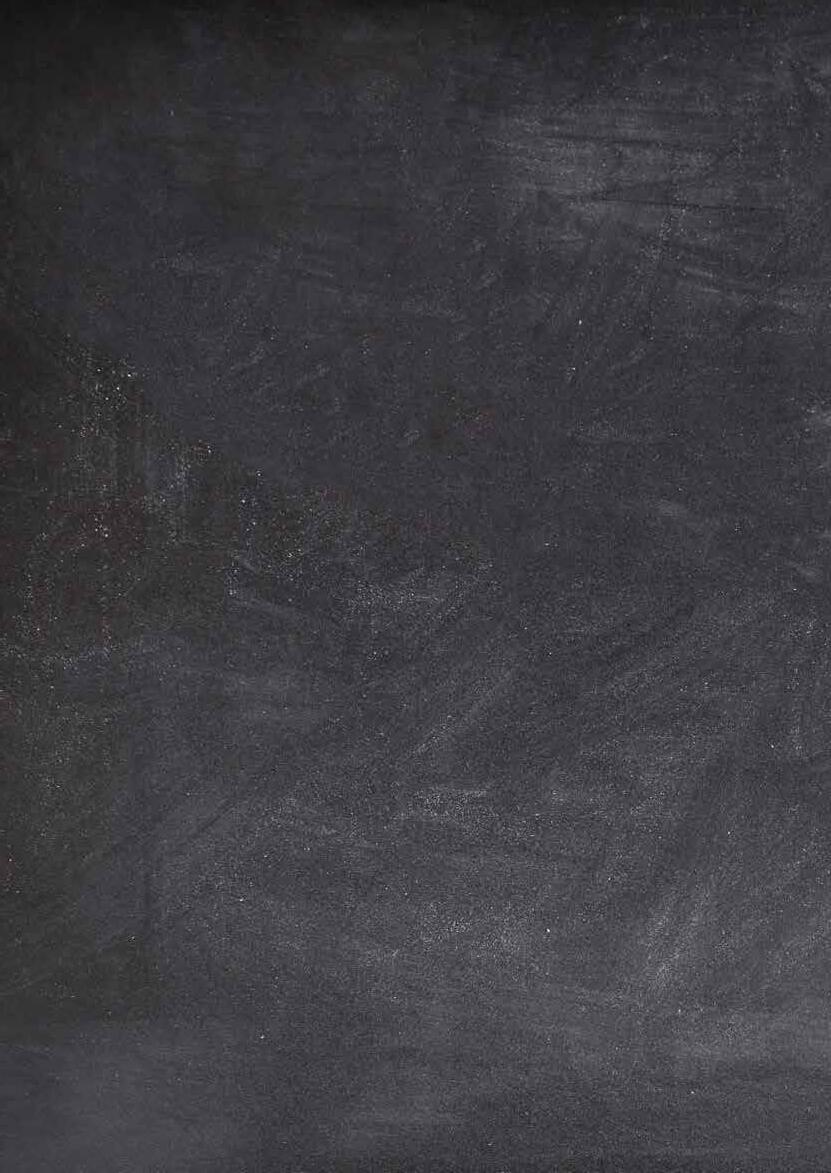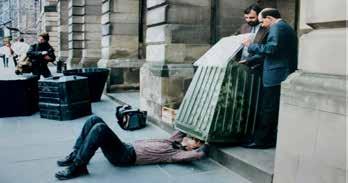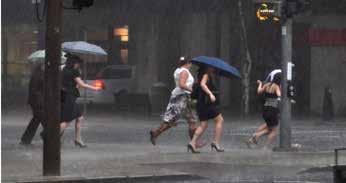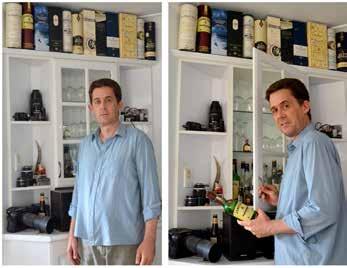
12 minute read
THE RESULTS ARE IN: INSTANT FAIL FOR QUT
THE RESULTS ARE IN:
INSTANT FAIL FOR QUT
Advertisement
During the course of this year the Student Rights team have been asking for student’s opinions and thoughts on QUT’s academic policy. We understand the struggles of everyday student life, even when the university doesn’t. With the continuous trials and tribulations of university, we asked you, the students, to raise your concerns, so we can better defend your rights and represent your opinions. Well, there is great news… the results are in! The two most prominent issues that we addressed were the shortened SWOTVAC period and QUT’s instant fail policy. With close to 1200 students stepping up to voice their concerns, we were provided with great insight into the views and beliefs of our diverse student population. The survey also provided an environment for students to shine light onto some of the other issues they face living as QUT students. Which ranged from tutor competency through to course/assessment practicality and even snakes in the GP gardens and much more. So let’s break down the feedback and peer into QUT’s academic record. This horror story began back in semester 2, 2014 in the midst of Brisbane hosting the G20 summit. QUT went from having ‘classes in lieu of public holidays’ or ‘catch up’ day and 4 SWOTVAC days prior to exam period, to two catch up days and only one for SWOTVAC. When queried, a member of QUT staff responded with “The QUT community managed well with only one day of SWOTVAC in 2014”. Using that period to justify the latest change to only 3 days of SWOTVAC, “This showed that examinations can be operated in this manner and there was some positive feedback from academics and students who were able to commence holidays earlier”. If that final comment isn’t enough evidence of the disconnect between QUT and its students, the following student surveys will be. The survey results showed that almost 1 in 3 students were unaware of QUT’s deviation to a 3 day SWOTVAC with an overall general consensus of 94% of respondents agreeing that this change does not provide them with the best chances for success on their exams. With over 4 out of 5 students stating that this change will cause them higher anxiety during this period and expressing concerns whether this will be enough time for exam preparation. With these sorts of comments, QUT’s form of ‘managing well’ aptly reminds me of the ‘This is fine’ meme which depicts a dog sipping coffee in this kitchen saying “This is fine” whilst his house burns down around him.
Further communications with the uni continued where the student guild enquired if there was any data the university had collected on the effects of the SWOTVAC changes to student success emphasising on the impact to pass rates, exam attendance and amount of concession applications for special consideration. To which QUT replied “The university has not collected any new data for the purpose of measuring a perceived impact of SWOTVAC changes”. This sort of action (or lack thereof) really emphasises the universities inability to not only connect and understand its students but also its pluralistic ignorance of the impacts its policy changes have on them.
The final nail in the coffin came when the blatant disregard of the opinions of students was brought up by the Guild and the reasoning why the shortened SWOTVAC remained. To which they responded it was more convenient for QUT as it allows them to have
THE RESULTS 1200
STUDENTS stepping up to take our survey and
voice their concerns
1 in 3 students
were unaware of QUT’s deviation to a 3 day SWOTVAC
of respondents agree that this change does not provide them with the best chances for success on their exams
over 4 out of 5 students stated that this change will cause them higher anxiety during this period and expressed concerns whether this will be enough time for exam preparation.
94%
their graduation ceremonies earlier in the year. This is definitely not the response that low income students want to hear from any educational institution that they pay to be educated by, let alone one into which they sink tens of thousands of dollars.
QUT’s late assessment policy (more widely known as instant fail policy) was introduced during 2013 and implemented January 2014. After QUT realised the importance of standardising its policy on late assessment across all faculties. Previously most faculties would simply deduct a percentage of your mark for everyday it was overdue however the Creative industries faculty already had the ‘instant fail policy’. This sort of inconsistency amongst faculties created a feeling of unfairness amongst students and frustration for those studying across multiple faculties. However the approach the uni decided to take was not so widely appreciated.
It is pretty widely accepted that the ‘cookie cutter’ or ‘one size fits all’ approach to learning and teaching is considerably fruitless. QUT generally understands this and therefore incorporates the use of tools such as decision matrices into its policies. However when it came to formulating a universal late assessment policy, it seems the uni actively sought out the least inclusive, comprehensive and real world option possible. I think t’s pretty safe to say that most organisations would rather a late and complete project over one which is partly finished and on time. Deadlines are important but that’s not what this policy encourages. It simply perpetrates a disconnect between QUT and the practices of the “real world”.
Results from the recent survey showed that over 65% of students believed this policy was unfair and an astounding one in every five students were completely unaware of it altogether. Which is hardly surprising given that the policy change was only advertised through the registers email (which we all know gets lost in piles of spam) and a poorly setup youtube video which can only be accessed via direct link - which I have attached at the bottom of this article for your amusement.

A Message from QUT Guild student rights
In reference to the above article, we have finally managed to start the conversation with staff about how students feel about instant fail. Early August a number of students sat down with academics from the <learning and teaching unit> with the goal to formulate a more inclusive alternative to plug that gap between failing and special consideration. With the late assessment policy up for review towards the end of this year, these sorts of actions should encourage the university to acknowledge and hopefully address the flaws with its current methods. It was also revealed that one in every ten students interviewed had been affected by the instant fail policy. We want to take this opportunity to inform our readers that one of the services we offer at the guild is student advocacy. Whether you are chasing more information of QUT policies or feel as if you have been disadvantaged by the university, we suggest you get in contact with us.
STUDENT RIGHTS HUB
E: WINGMAN@QUTGUILD.COM P: 1800 WINGMAN • 24/7 HOTLINE: 0421 486 937 WWW.QUTGUILD.COM

By Gulio Saggin
We live in an unprecedented age of photography, where there are over 2.5 billion smartphones in the world and it’s been estimated more photos were taken – and shared on social media – in 2015 than in the history of film photography before then.
This ‘smartphone generation’, whether they realise it or not, are recording history via their images. However, merely owning a camera, smartphone or otherwise (even a ‘really good’ camera), doesn’t make someone a photographer, just as owning a ‘really good’ laptop doesn’t make someone a writer.
During my time as national photo editor with ABC News Online I saw many photos taken by the smartphone generation. A good proportion of them were not-sogood, but only because the photographer didn’t know any better. I could see they were ‘so close’ and a few simple tips would have made all the difference.
When I joined ABC News Online as photo editor one of my jobs was to give reporters advice on how to take photos. I wondered how I could compress 20+ years experience into a presentation and thought about the line – ‘a picture shows something, a photo tells a story’. If a photo did tell a story, then it would have to employ the same techniques as those used in writing.
I began deconstructing photos and soon realised they were indeed visual stories structured in the same way as written stories. Both contained such things as finding an angle, using exciting copy, adding a human element and including all the necessary information ... the list went on and on. examples to show this and when ABC reporters viewed it, they loved it. Others who saw my presentation also loved it, including journalism students I lectured (QUT among them). Photography had been translated into a universal language understood by everyone – the written word.
And because this language is universal, the techniques in my presentation – now a book – should be used in every photo you take, whether it be at a party, on holiday or walking down the street. After all, a story, visual or written, is always more interesting than a jumble of information.
About Giulio Saggin
Giulio Saggin is the former photo editor with ABC News Online and author of “You, The Citizen Photographer: Telling Visual Stories.”
FIND AN ANGLE


All stories have a point – an angle – otherwise it’s a boring collection of words, written or spoken. We see life at eye level, so photographers try as much as possible to find an angle – crouch, sit, stand on something – to make the point of view more interesting for the viewer. If you can’t move your subject, move yourself.
ADD A HUMAN ELEMENT


News stories have quotes. News photos have people. We, as humans, are interested when we see other humans. Rain pouring from the sky during a downpour can look good but someone running through pouring rain with no umbrella adds interest. We can emphathise because we have all been there.
HOLDING YOUR CAMERA

Smartphones and other hand held devices are designed to be held vertically, so people instinctively turning them around and take a vertical image. Instinct or not, we live in a horizontal world. We scan the horizon ‘left to right’ and not ‘up and down’, the same as a street, a room, a football field, a flood ... the list goes on. Our TVs and movie screens are horizontal for a reason. A well-taken photo and a well-written story are devoid of useless information. Most vertical images show the relevant visual information in the centre of the frame, with useless information filling the top and bottom of the frame.
USE EXCITING COPY

The best way to get exciting copy into your visual story is to get your subject doing something. This usually means getting the hands to do something. There is nothing worse than seeing hands hanging by someone’s side. Even hands in pockets or arms folded is more interesting than hanging by the sides.

QUT Snowriders New Zealand Snow WeeK
By Rob Joseph
Members of QUT Snowriders recently gave up their pre-semester preparation time to represent Brisbane’s premier university in the annual New Zealand Uni Snow Week. As part of nearly 70 students from Australia’s East Coast, our Snowriders invaded Queenstown for a week of shenanigans, partying, adventuring and a bit of snow.
Unfortunately the snow gods didn’t hold up their end of the deal, as the South Island experienced a very slow start to their snow season this year. Luckily there was just enough man made snow to shred for the first few days. The Snowriders crew had a blast on mountains, with shredders of every skill level having the time of their lives on the slopes. The community feeling was strong on the whole trip, with many of the better riders hanging out and giving tips to the newbies. With a whole bunch of newfound confidence, some of the beginners decided to hit the black diamond runs, with hilarious results. As usual though, the trippers all lent a helping hand, albeit having a good laugh under their facemasks.
What Queenstown lacked in snow, it made up in topnotch bars and cheap drinks. QUT showed pure class in all aspects of the week, including smashing the dance floor and showing our UQ counterparts how to have a good time. Queenstown’s après-ski scene is fantastic, and where friendships created on the chairlifts, buses or dorms were solidified. Fergburger provided all the sustenance needed on either the slopes or the d-floor, with the vegetable content of the meals going a long way in keeping us alive.
On our 2 off days, the team managed to peel themselves out of our accommodation to go luging and go karting. Christoph Phillipen, one of our much loved exchange students, put his German heritage to the test taking out fastest go karter. The difference in skill was also evident on the luge track, where pure carnage ensued from some of the other Aussie kids. After some harsh name-calling, and accusations of excessive aggression behind the wheel, all was forgiven later at the bar over a drink (I’m still sorry Hannah).
Wednesday meant a live NRL game, but due to the game playing at nearly 10pm local time, the only logical solution to pass time was pizza, $10 steins of beer and a bucking bull. Safe to say a sensible time was had by all. A nearly 50% split between QLD and NSW uni students made for an intense game and ever more intense sledging match. Regardless of result, we all agreed the NSW team were all grubs.
After all the shredding, luging, bus rides, go karting, dancing and responsible drinking, the whole crew had an amazing time. With nearly 70 new mates, at 3am Saturday morning we all said goodbye. It was one of the best weeks I’ve ever experienced, with some of the best people I’ve met, even our new mates from UQ, UNSW and UOW. Special thanks to the executive team, especially Lachlan Spedding for captaining the trip. You could write a book about all the great times we had in NZ, but drop into one of our next Snowrider socials and you can hear all about it, or come next year to be part of the radness!









